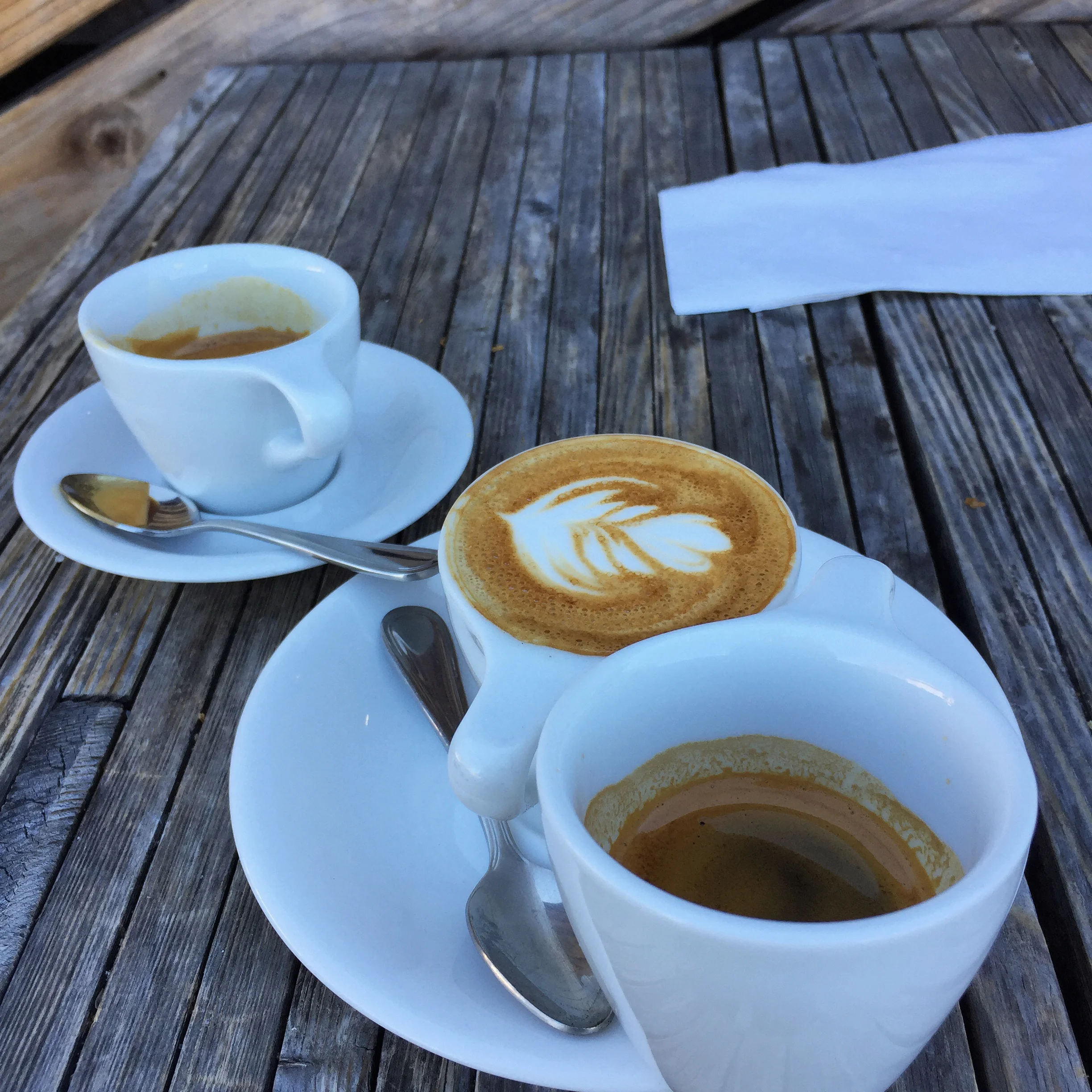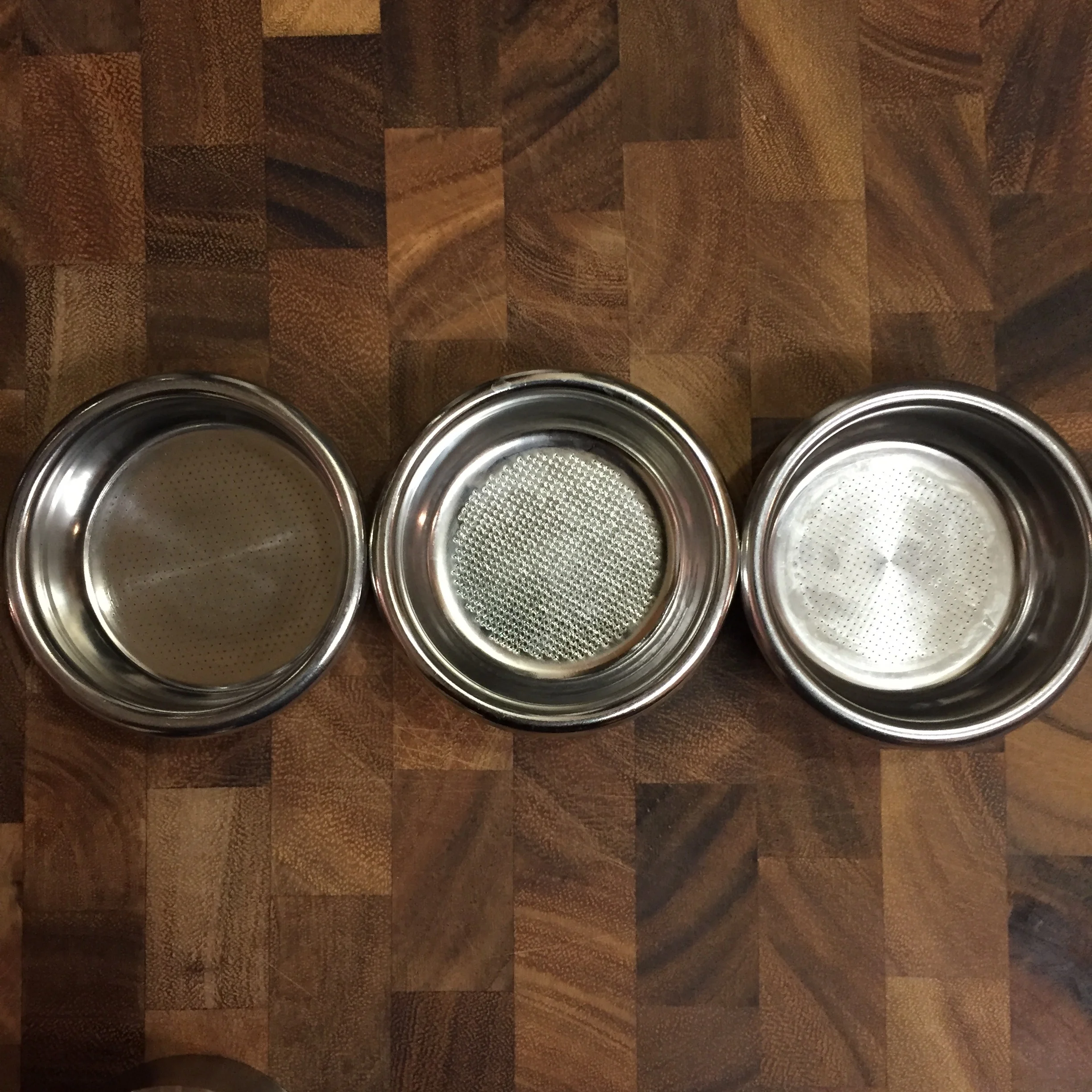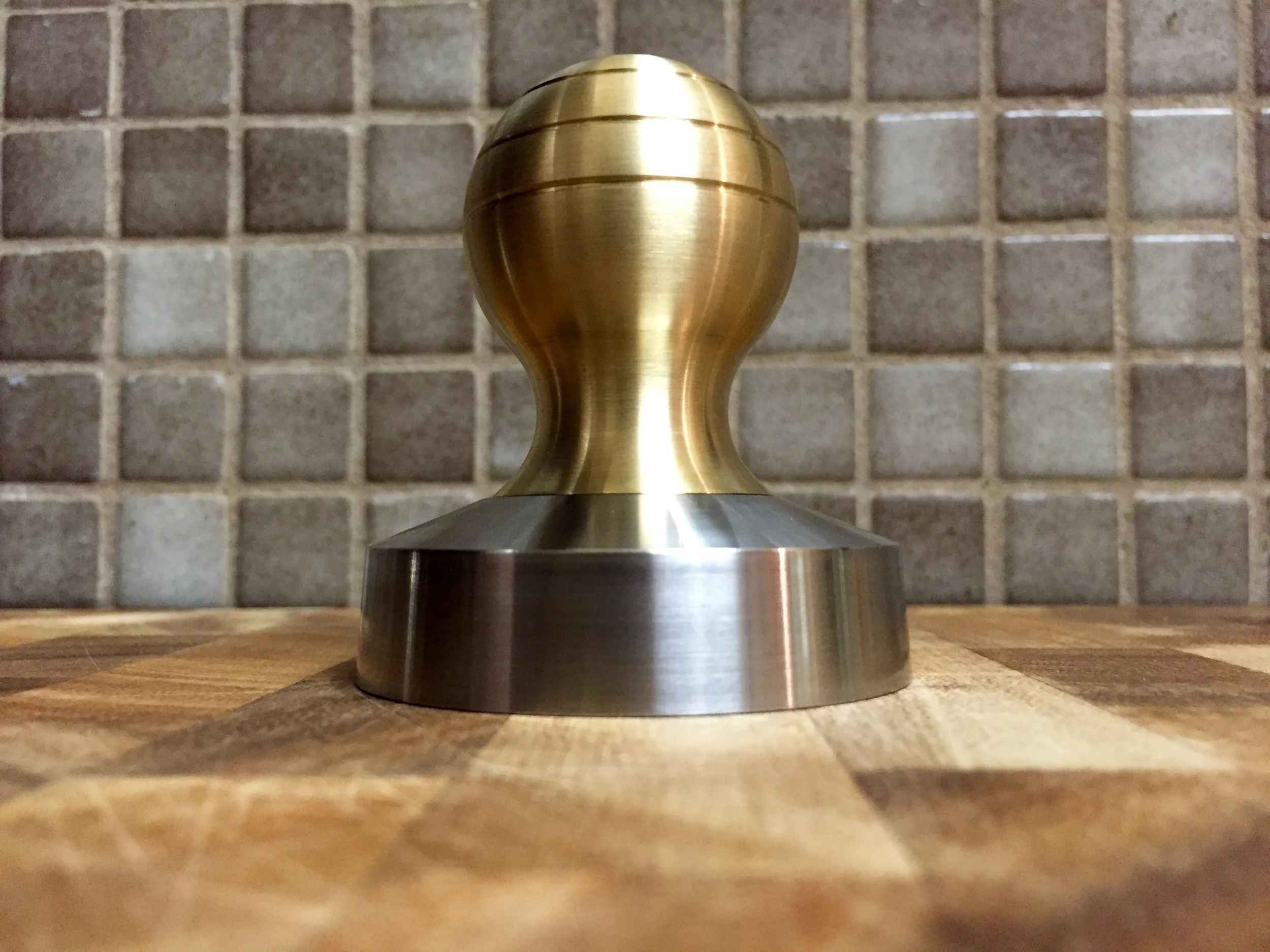1&1 of Verve's Street Level Espresso Blend and a straight shot of their Single Origin Espresso at their Seabright location
I love to travel, and one thing I love to do when travelling is seek out and try different coffee roasters and/or shops. If the coffee is good, or even if it's a coffee I've ordered or had before, it's always fun to have it prepared by someone that has more experience and has way more time working with that particular coffee than I ever will pulling a couple of shots a day. I figure with most reputable roasters; they have selected a coffee, developed a roast profile, and dialed in brew parameters to maximize that coffee's potential, as they see it. Provided it's not crazy busy, I try and chat with the barista as well, and see what they have found when working with the coffee, as well as what brew parameters/recipe they're using. Pour over or brewed coffee is typically straight forward: other than technique (which you can pick up on by watching), it's just dose or brew ratio, temperature, time. Espresso recipes get much more complicated with the variables of different equipment; grinders that may have flat or conical burr sets and commercial espresso machines that have different water flow rates, temperature profiles, pre-infusion cycles, or pressure profiles, (though the latter is less common in a commercial setting, where they're usually too busy to play with those factors). The one thing that is consistent, is nearly all of these third-wave shops in the US are using VST / Strada filter baskets when pulling their espresso shots (Strada baskets are made by VST for La Marzocco). Click the link through to the VST page to learn more about the baskets, or if you want to really get science-y about it, this article explains the development process of the VST precision filter basket, in great detail. So, it would only make sense for me to try and use the same filter baskets, right?
My first tamper, a cheap 58mm with short wood handle. I like the shorter handle so I can equally distribute my fingertips to do an even initial leveling tamp, like pictured.
Like most, I started my espresso journey using the stock double filter baskets supplied with my machine, because they work and they're included. When I purchased my very first espresso machine, I bought an inexpensive 58 mm tamper as well. The tamper has always been slightly undersized, as even the stock baskets are typically a hair larger than 58 mm in diameter, but when it comes to precision filter baskets that are maximizing extraction and surface area, that difference increases. Maybe it's because I learned this whole process with this tamper, but I grew very comfortable with its proportions and size, it fit my hand and technique well. So, I figured out how to work around the slightly undersized piston by using a light nutation method of my initial leveling tamp. This method of rotating the tamper similar to how a coin would oscillate as its spin came to stop, compensated for the tamper by sealing the edges that would normally not be compressed in a vertical tamp creating donut extractions. Using the stock double, the Espresso Parts HQ ridgeless double, and even the IMS Precision 16/20 double, careful prep and nutation usually resulted in great shots. The IMS would start to struggle with extraction on more difficult coffees, like a demanding, light roasted, single origin espresso, but because it can fit such a high dose and requires a finer grind than the EP HQ or stock double, it sort of self compensated. I will do post in the near future covering basket differences, but as you can see, they progressively increase in hole quantity and extraction surface.
From Left to Right: VST 18 gram, IMS Precision 16/20, and Espresso Part HQ 14g Ridgeless
From Left to Right: VST 18 gram, IMS Precision 16/20, and Espresso Part HQ 14g Ridgeless
This year, I picked up an 18 gram VST basket, that, now paired with my extremely capable, commercial quality Compak K10 Pro Barista grinder, should have worked quite well. I quickly discovered that the VST basket required a much finer grind than any of the other baskets I have used before, and was considerably more sensitive to dosing (it is commonly suggested to use a dose close to the basket's rating (i.e. 17-19 grams in the 18 gram basket)). But what I didn't expect was uneven extractions, dead spots, and inconsistency of those faults at that. Now, this was not every shot, and it depended on what coffee I was using, but it was certainly more than the consistency I was used to. I tried stirring the grounds, using the WDT method, different prep techniques, and different tamping techniques. Eventually, I decided it was potentially the undersized tamper, and that the tolerance was too tight for nutation to compensate for.
I knew I wanted a shorter handled tamper because I like to use my finger tips on all sides to do my initial leveling tamp. I ordered a 58.35 base with the shortest handle available from Coffee Complements on eBay. This guy, who is very responsive, and quick has high quality, custom machined tampers at much lower prices than the big name brands. My first shots upon receiving the tamper immediately improved extraction consistency. Dead spots, channeling, uneven flow, unsightly pours were all gone! So, now I know just how important using the proper size tamper for your basket is. Shots were more balanced and pronounced - no longer was I getting shots that were simultaneously under and over extracted due to uneven flow.
58.35 mm nutation base tamper with short brass handle from Coffee Complements
The tamper, however, didn't quite suit what I was looking for. The length and shape of the handle, the edge of the base, and the weight were all just a little bit off, for my preferences. This being meticulist, I began to seek out the right tamper...
Next week, I'll dive into part 2 of the this series looking at tamper characteristics: what to look for, a comparison between some different styles, why that tamper wasn't what I was looking for, and what is.



